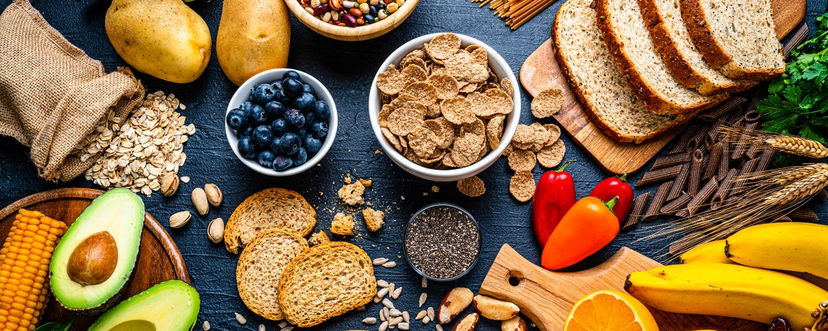
When to Eat? Intermittent Fasting Window Schedule
In recent years, intermittent fasting has surged to the spotlight, especially in the weight loss and fitness industries. This eating pattern, characterized by alternating windows of eating and fasting, offers all sorts of health benefits. It can be incredibly helpful in shedding extra pounds, so it’s no surprise that the practice has captivated many people seeking a structured yet flexible approach to their dietary habits.
There are a couple of different intermittent fasting eating windows to choose from, some more extreme than others.
What is Intermittent Fasting?
Intermittent fasting is the process of adjusting your eating plan to incorporate eating windows and fasting periods. The alternate eating pattern is often used to help with weight loss and fitness journeys.
It works by restricting food consumption, which can push the body to look to the fat stores for energy. When we eat regularly, our bodies burn through the carbohydrates we consume, using the glucose they provide as a fairly direct fuel source. However, we burn fat for energy when glucose isn’t readily available.
Since that shift happens more quickly and efficiently during times of food deprivation, intermittent fasting has become a popular eating plan in the fitness and weight loss industries. It can help you shed the extra pounds you’re trying to lose even faster than you would on a standard eating plan.
Benefits of Intermittent Fasting
Intermittent fasting can offer numerous benefits, from weight loss to brain-boosting benefits. A few core perks include:
- Weight loss: Losing weight can be tough, but intermittent fasting can help. It can help you eat fewer meals, and unless you consume extra during the eating window, you’ll consume fewer calories. That lowered calorie consumption, over time, translates to weight loss.
- Lowered risk of type 2 diabetes: Fasting can help reduce insulin resistance and lower your blood sugar levels, both of which are associated with type 2 diabetes.
- Heart health benefits: Intermittent fasting has been shown to help boost heart health, potentially decreasing the risk of heart disease by improving risk factors, such as blood sugar levels, blood pressure, and total and LDL (bad) cholesterol.
- Brain boost: Studies have shown that intermittent fasting may help increase levels of brain-derived neurotrophic factor (BDNF), a deficiency of which may be associated with depression and other brain conditions. It may also protect against brain damage resulting from a stroke.
Different Intermittent Fasting Windows
There isn’t a one-size-fits-all fasting window. For some, the 12-hour fast might not be enough to see results, but the full-day fasts might be too taxing for their bodies. In this case, the 16-hour fast might be a happy medium. It all depends on what works for your body and your medical history.
Here are the most common eating windows for intermittent fasting:
12-Hour Fast
The 12-hour fast is the simplest of the fasting methods. Some people even do this fast regularly without even noticing! It’s fairly simple: you have a 12-hour fasting period and a 12-hour eating window.
So, you could finish dinner at 8 p.m. and wait until 8:00 a.m. the following morning to consume breakfast. Or, if you’re an early riser and enjoy breakfast, you might stop eating at 5:00 p.m. and start again the following morning at 5:00 a.m. It’s up to you!
Since most of the fasting period is usually spent sleeping, this form of fasting is often the easiest for people to manage. It’s a relatively beginner-friendly method, allowing people to make small lifestyle changes to begin working toward their weight loss and fitness goals.
16-Hour Fast
The Leangains diet, or 16-hour fast, involves fasting for 16 hours each day. This leaves an eating window of 8 hours for regular calorie consumption. Generally, participants stop consuming food at a specific time in the day and wait 16 hours before consuming food again the following day.
For example, you might finish your dinner at 8:00 p.m., waiting until noon the next day to resume eating. Or, you could wrap up your meals for the day at 5:00 p.m. and resume regular eating the next day at 9:00 a.m. The schedule is entirely up to you.
Full-Day Fasts
Beyond the multi-hour fasts, some choose to incorporate full-day or multi-day fasts into their routines.
For example, those who follow the 5:2 diet consume their standard calories on five days of the week and drastically reduce that consumption on fasting days. For instance, a woman might consume just 500 calories, while a man might consume 600 calories on those days. Generally, the fasting days are separated during the week, such as Monday and Thursday or Wednesday and Saturday.
A second type of full-day fasting, alternate-day fasting, involves fasting every other day. This is quite extreme, although the specifics can look different for each person. Generally, the fast involves regular eating on one day and restricting down to just 500 liquid calories the next day.
The eat-stop-eat diet, another form of the full-day fasts, involves complete fasting for one or two days each week. On this diet, people don’t consume calories for 24 hours at a time, often from breakfast to breakfast or lunch to lunch. They may consume water, tea, black coffee, and other calorie-free drinks on the fasting days, but nothing with calories.
The Warrior Diet
The warrior diet is one of the most extreme forms of intermittent fasting. With this diet, individuals eat very little throughout the day, sticking to raw fruits and vegetables, if anything. Then, in the evening, they consume one large meal during a four-hour period.
This leaves most of the day, about 20 hours, for fasting. Since it’s a modified fast, you can consume some raw fruits and vegetables, and some even consume small amounts of protein and select beverages, such as milk, coffee, water, and unsweetened tea.
However, leaving your body running primarily on empty for most of the day can be difficult, especially if you haven’t tried fasting before.
One Meal a Day (OMAD)
The one-meal-a-day (OMAD) diet is on the more drastic end of the intermittent fasting spectrum. As the name implies, this diet involves consuming one meal per day. That meal is consumed in a one-hour window, leaving the remaining 23 hours of each day for fasting.
Since this isn’t a modified fast, foods during the fasting window are generally discouraged. You may consume calorie-free or very low-calorie beverages, such as black coffee, water, and unsweetened tea.
During the one-hour meal window, you’re encouraged to consume calorie-dense foods, totaling your daily calorie consumption. However, packing 2,000 calories (or however many calories you typically consume) into a single hour can be difficult, especially if you’re eating wholesome, nutrient-dense foods.
The Verdict: When to Eat During Intermittent Fasting
Ultimately, the best intermittent fasting schedule hinges on you and your needs. Everybody is different, so what works for you might not work for the next person. You might see incredible results with the 16-hour fast, while someone else might love the results they get with the alternate-day fast.
It all depends on you and what eating and fasting schedule best suits your needs. Talk to your doctor if you’re unsure which option might be a good fit. If you get the green light and need help coming up with a customized exercise plan to complement your intermittent fasting plan, chat with a certified personal trainer near you.
Frequently Asked Questions
Is Intermittent Fasting Safe?
Intermittent fasting can be a beneficial addition to many lifestyles. However, it may not be safe for everyone, especially those with specific medical conditions or in specific situations. For example, intermittent fasting may not be safe or suitable for individuals under the age of 18, pregnant women, and those with diabetes. If you’re unsure, talk to your doctor.
Can Women Safely Do Intermittent Fasting?
Women’s bodies naturally go through various phases throughout the month, following the infradian rhythm, which regulates the menstrual cycle. The body requires different things in each phase, so while intermittent fasting is safe for most phases, it may not be ideal during the menstrual cycle itself. The first few days of the period can be taxing on the body due to blood loss and hormonal changes, so intermittent fasting may not be safe.
During other phases, intermittent fasting is generally safe, providing no medical conditions exist that may be affected by the practice. If you’re unsure whether intermittent fasting is safe for you, talk to your doctor.
Is It Better to Fast for 12 or 16 Hours?
The best period for fasting depends on you. Everybody is different. Some people may find that the 12-hour fast helps them achieve the desired results, while others may not see much change. The 16-hour fast is often considered the golden rule of fasting since it’s more manageable and sustainable than more extreme forms of fasting and can offer better results than the 12-hour fast.
Start your Svetness journey today
Get a free consultation and see how our trainers can transform your wellness journey.





